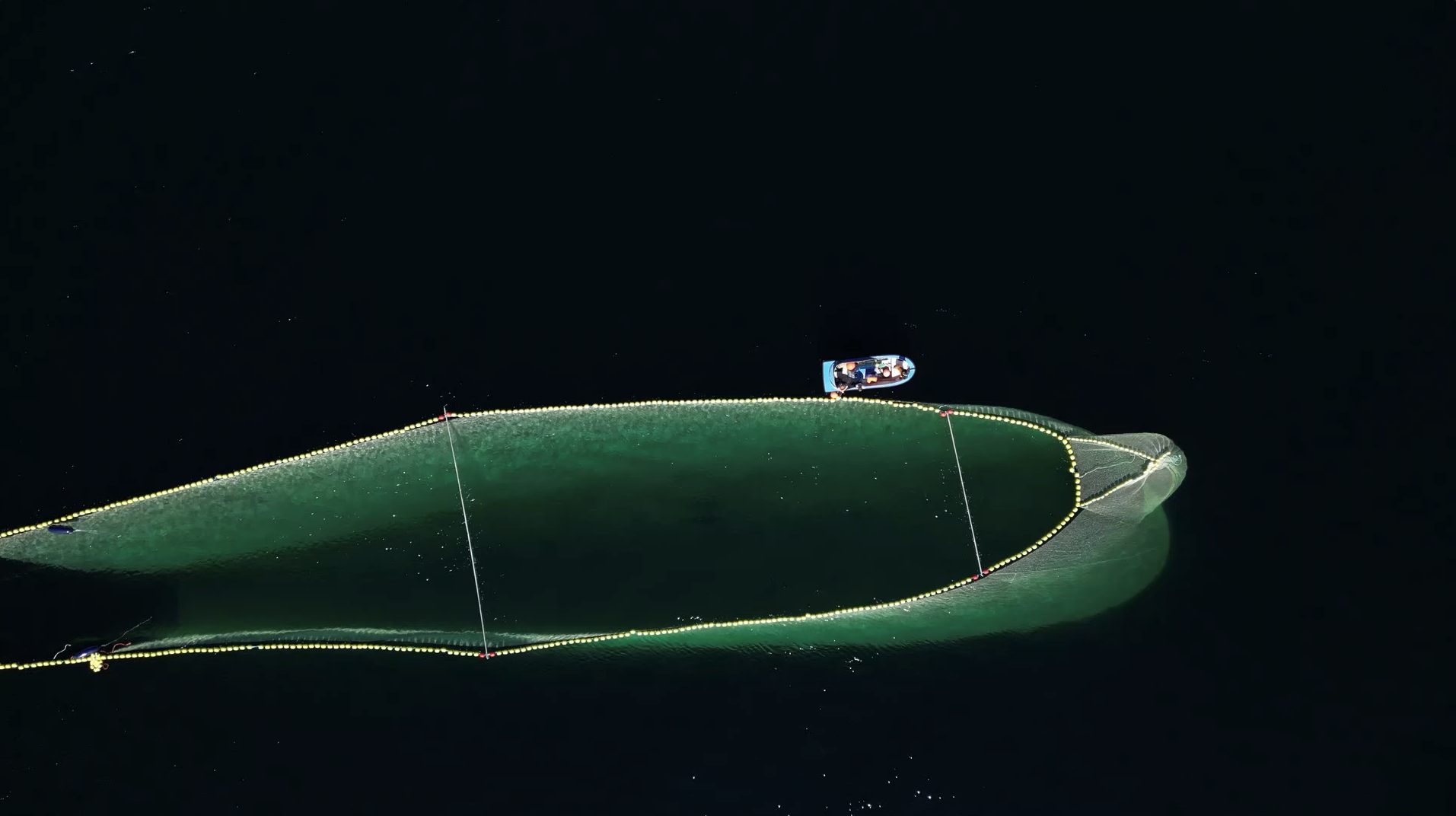Live storage of bluefin tuna: Historic success in Norwegian waters
Published: 22.08.2023 Updated: 14.12.2023
(Video: Sølve Kvernøy, fisher on "Vestbris")
For several years, marine researchers have tried to catch bluefin tuna, the worlds largest tuna species, for live storage in Norway.
Now, they have finally succeeded. The team aboard fishing vessel "Vestbris" aided by "Fjordgyn" from the Directory of fisheries, first succeded in catching a bluefin tuna off the rough Stad coast. They were able to transfer it to the specially designed transport cage, and then to tow it to shore.
In the following week, they replicated and scaled up the feat, with 22 bluefin tuna in the transport cage at most.
(Update December 2023: The technical cruise report is now published: Pilot project for the short-time live storage of bluefin tuna)
Might solve several problems
"We are very happy to finally succeeding. We have learnt alot by these small proofs of concept," says marine researcher and IMR project manager Manu Sistiaga.
Live storing the enormous bluefin tuna is almost like a holy grail for the Norwegian tuna fisheries. It is being done in the Mediterranean, but under completely different conditions.

Fishing crew and researchers inspect the fish and the transport cage, designed by IMR-engineer Jostein Saltskår. Can you see the 220 kilo BFT? (Photo by Sølve Kvernøy, crew on the "Vestbris")
Though the ordinary purse seine fishery, a large catch of bluefin tuna is very hard to handle quickly enough to ensure good quality. In addition, the market is flooded with fish all at the same time.
Live storage may solve both these issues. But many research questions remain.
(Project description from 2020 in Norwegian: Vil fange makrellstørjer på 250 kilo – og lagre dem levende i merd)
Researchers feel confident about the design
"Now we know that we are able to person controlled transfers from purse seine to transport cage, and we have documented that the tuna are well inside it, even after several days of towing," Sistiaga says.
"The cage forms a large and deep pool. We are confident that between 50 and 100 fish will be fine inside.
At shore, researchers were able to inspect the cage, fish and put the fish to death in a controlled manner, also by electrocution (which is another research project by the IMR).
Makes way for new questions
Fish quality researchers from NOFIMA and the IMR have secured a number of samples to learn more of the "live stored" fish as opposed to fish caught and put to death at sea.
A section of the very first transported fish was sent out to the Oslo market to learn about the potential of achieving a higher price.
"In the long run, we need to find out how long the fish can be safely kept in a cage, what food they would need and what sea tempertures they will thrive in. But first we need to improve on the catch, transfer and transport," says Manu Sistiaga.
He praises the team effort, a cooperation between researchers, fishers and the fisheries authorities, the Directorate of fisheries.
Happy in having the Directorate on board
In addition to supplying a vessen and her crew, the Directorate of fisheries handle the coordination with ICCAT – The International Commission for the Conservation of Atlantic Tunas. There are strict regulations and reporting for the species.
"The regulations are adapted to the fisheries in the Mediterranean, where the conditions are drastically different from here. They can use divers for many operations, which we cannot, explains Hermann Pettersen," project manager at the Directorate.

"We need to invent new methods"
He says we have to think differently in the Norwegian waters, in making a sustainable, controllable fishery which is also accepted by the other ICCAT member nations.
"Our project shows the importance of cooperation between the management, industry, and research. We were lucky to sign a contract with "Vestbris" this year, with her experienced crew and knowledge in catching tuna. I would also like to commend the rest of the team. This is a big undertaking, and we have only just begun," says Pettersen.
